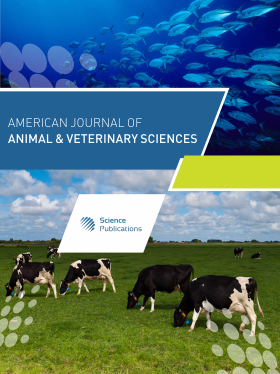The Use of Management and Hormonal Oestrous Synchronisation on Indigenous Sheep Reared Extensively
- 1 Department of Animal, Wildlife and Grassland Sciences University of the Free State, Bloemfontein, South Africa
- 2 Department of Animal Science, Tshwane University of Technology, Faculty of Science, Pretoria, South Africa
- 3 Department of Agriculture, Mara Research Station, Limpopo, South Africa
- 4 Agricultural Research Council, Irene, Pretoria, South Africa
- 5 Department of Life and Consumer Sciences, University of South Africa, Florida, South Africa
- 6 Department of Animal Science, University of Pretoria, Hatfield, Pretoria, South Africa
Abstract
As the global population increases, demand for animal products will result in increased livestock-related greenhouse gas emissions that contribute to climate change. One of the strategies for reducing this impact would be the improvement of indigenous livestock reproductive efficiency that are hardy and well adapted to harsh environmental regions. The use of reproductive technologies increases efficiency of animals necessary for profitable production. This study evaluated the effects of age and body condition score on the response and duration of oestrus in synchronized Bapedi ewes, conserved ex-situ in vivo and in situ. Study ethics procedures were approved by the Agricultural Research Council Irene animal ethics committee. Ninety-one Bapedi ewes (<2 and 3-6 years of age) were used in the study from five different research stations (Towoomba = 12, Tompi Seleka = 19, Mara research station = 20 and Agricultural research council Irene = 40). Ewes were chosen based on the Body Condition Scores (BCS) <3 and BCS≥3 on a scale of 1-5 during breeding season (March-June). For estrous synchronization, Controlled Intravaginal Drug Release (CIDR®) dispensers were inserted for 9 days and 300 IU of equine chorionic gonadotrophin was injected intramuscularly after CIDR removal. Oestrus detection was done for a period of 72 h, from CIDRs withdrawal with a vasectomized ram and ewes that were receptive to the ram were hand mated with Bapedi rams. Data was subjected to GLIMMIX procedure and Chi-square in SAS 2009. The results were measured significant when p<0.05. There were no significant differences observed in the oestrus response of ewes regardless of age (p>0.05) and method of conservation. The oestrus response was higher for ewes with BCS≥3 compared to the lower BCS group (p<0.05). Old and lower BCS ewes showed oestrus signs earlier (23±2.8; 21±4.1); (22±4.1; 20±5.3) and with a shorter duration (23±8.2; 20±6.2); (22±4.0; 23±3.2) compared to young and higher BCS groups (onset of oestrus: 34±2.0; 32±2.4); (36±1.3; 35±2.3) duration (30±1.3; 29±1.5); (33±5.0; 32±6.0) (p<0.05). Higher oestrus was observed on ewes with BCS ≥3. Young and high BCS ewes had a delayed onset of oestrus that lasted longer compared to old and lower BCS ewes. The conception rate was 65, 67, 53 and 70% for ARC, Towoomba, Tompi Seleka and Mara Research Station respectively (p>0.05). Towoomba farm had a significantly lower litter size recorded compared to all the other farms. The prolificacy of Bapedi sheep was 1.30±0.6 1.28±1.3; 1.29±0.8 and 1.31±0.5 for ARC, Towoomba, Tompi Seleka and Mara farms respectively. It was concluded that the conservation method did not affect the reproductive performance of Bapedi sheep. Bapedi ewes can be synchronized successfully with an acceptable conception rate without supplementary feeding. It is recommended that flush feeding should be done to improve the litter size
DOI: https://doi.org/10.3844/ajavsp.2024.265.272

- 2,915 Views
- 1,615 Downloads
- 0 Citations
Download
Keywords
- Age
- Body Condition
- Oestrous Synchronization
- Indigenous Sheep
- Conservation
